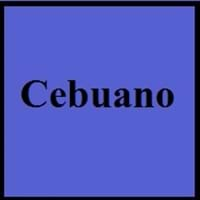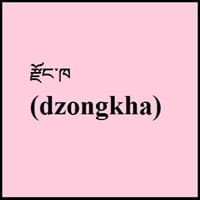Cebuano and Dzongkha
Countries
Philippines
Bhutan
National Language
Philippines
Bhutan
Second Language
Philippines
India
Speaking Continents
Asia
Asia
Minority Language
Not spoken in any of the countries
India
Regulated By
Visayan Academy of Arts and Letters
Dzongkha Development Commission
Interesting Facts
- About one-fifth of the population of the philippines speak cebuano and are second largest ethnolinguistic group in the country.
- Cebuano contains many words of Spanish origin.
- Standard romanization of the Dzongkha language is Roman Dzongkha.
Similar To
Hiligaynon Language
Sikkimese Language
Derived From
Island of Cebu
Tibetan Language
Alphabets in
Cebuano-Alphabets.jpg#200
Dzongkha-Alphabets.jpg#200
Scripts
Latin
Dzongkha Braille, Tibetan Braille
Writing Direction
Not Available
Not Available
Language Levels
Not Available
Time Taken to Learn
Not Available
Thank You
Salamat
Kaadinchhey La
How Are You?
Kumusta man ka?
Ga Day Bay Zhu Yoe Ga ?
Good Night
Maayong Gabii
lek shom ay zim
Good Evening
Maayong Gabii
Not Available
Good Afternoon
Maayong Hapon
Not Available
Good Morning
Maayong Buntag
Not Available
Please
Palihug
Not Available
Sorry
Ikasubo ko
Tsip maza
I Love You
Gihigugma ko ikaw
Nga cheu lu ga
Excuse Me
Ekskyus mi
Tsip maza
Where They Speak
Bohol
Bhutan
How Many People Speak
Not Available
Dialect 2
Southern Kana
Lunana
Where They Speak
southern Leyte
Bhutan
How Many People Speak
Not Available
Dialect 3
North Kana
Adap
Where They Speak
northern part of Leyte
Bhutan
Total No. Of Dialects
Not Available
How Many People Speak?
Not Available
Speaking Population
Not Available
Native Name
Visayan
རྫོང་ཁ (dzongkha)
Alternative Names
Binisaya, Bisayan, Sebuano, Sugbuanon, Sugbuhanon, Visayan
Bhotia of Bhutan, Bhotia of Dukpa, Bhutanese, Drukha, Drukke, Dukpa, Jonkha, Rdzongkha, Zongkhar
French Name
cebuano
dzongkha
German Name
Cebuano
Dzongkha
Pronunciation
Not Available
Not available
Ethnicity
Cebuano people
Ngalop people
Origin
16th century
17th Century
Language Family
Austronesian Family
Sino-Tibetan Family
Subgroup
Not Available
Not Available
Branch
Not Available
Tibeto-Burman
Early Forms
No early forms
No early forms
Standard Forms
Standard Cebuano
Dzongkha
Language Position
Not Available
Signed Forms
Not Available
Not Available
Scope
Individual
Individual
ISO 639 1
No data Available
dz
ISO 639 6
Not Available
Not Available
Glottocode
cebu1242
nucl1307
Linguasphere
No data Available
No data Available
Language Type
Living
Living
Language Linguistic Typology
Verb-Subject-Object
Not Available
Language Morphological Typology
Not Available
Not Available
All Cebuano and Dzongkha Dialects
Most languages have dialects where each dialect differ from other dialect with respect to grammar and vocabulary. Here you will get to know all Cebuano and Dzongkha dialects. Various dialects of Cebuano and Dzongkha language differ in their pronunciations and words. Dialects of Cebuano are spoken in different Cebuano Speaking Countries whereas Dzongkha Dialects are spoken in different Dzongkha speaking countries. Also the number of people speaking Cebuano vs Dzongkha Dialects varies from few thousands to many millions. Some of the Cebuano dialects include: Boholano, Southern Kana. Dzongkha dialects include: Laya , Lunana. Also learn about dialects in South American Languages and North American Languages.
Cebuano and Dzongkha Speaking population
Cebuano and Dzongkha speaking population is one of the factors based on which Cebuano and Dzongkha languages can be compared. The total count of Cebuano and Dzongkha Speaking population in percentage is also given. The percentage of people speaking Cebuano language is 0.32 % whereas the percentage of people speaking Dzongkha language is Not Available. When we compare the speaking population of any two languages we get to know which of two languages is more popular. Find more details about how many people speak Cebuano and Dzongkha on Cebuano vs Dzongkha where you will get native speakers, speaking population in percentage and native names.
Cebuano and Dzongkha Language Codes
Cebuano and Dzongkha language codes are used in those applications where using language names are tedious. Cebuano and Dzongkha Language Codes include all the international language codes, glottocodes and linguasphere.





